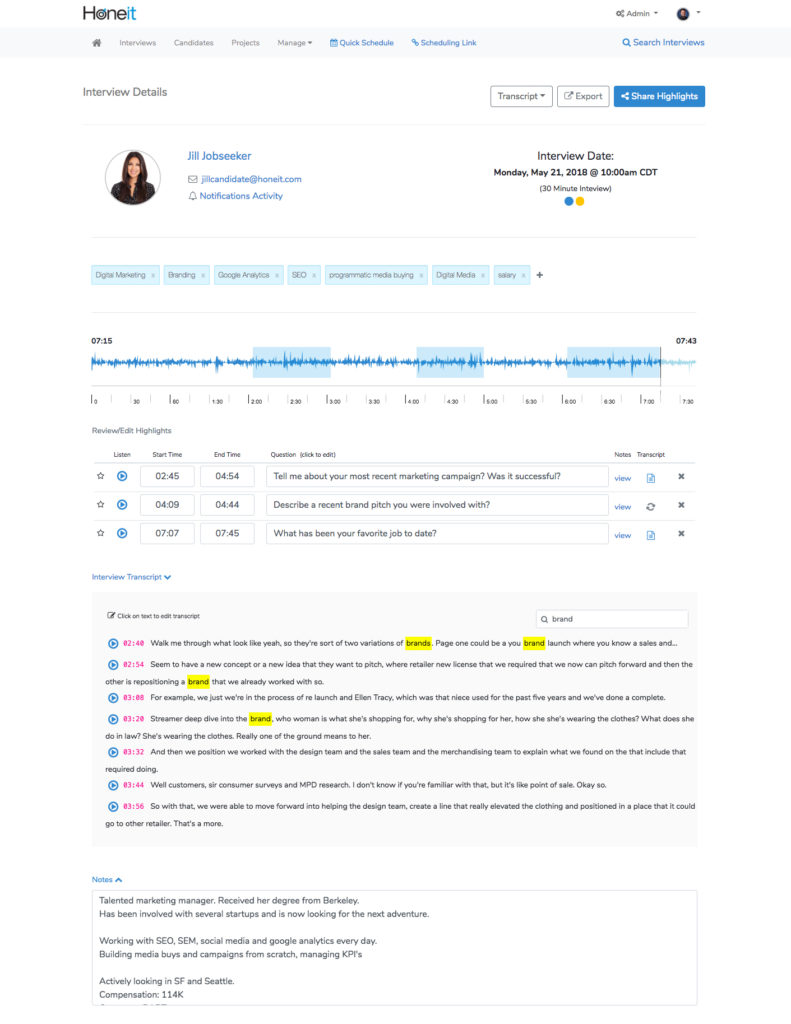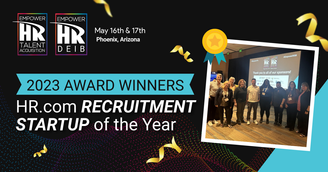Quick definitions:
Synchronous conversations are real conversations between two people.
This is meeting for happy hour, talking over the telephone, or hopping on a Zoom, Hangouts, Skype, or other to talk through a work problem or just catch up.
In recruiting, intake calls, phone screens, prep calls, debrief calls, video interviews, and reference calls would all commonly be examples of what should be synchronous conversations. We’ll talk more about this in a second (pros/cons), but all of these conversations are potentially chock full of actual data, i.e. talent insights, i.e. real learnings about potential future employees. But they’re often not treated as “data.” Standby for that while we define the other term.
Asynchronous conversations are one-way tools where candidates screen themselves and record answers to pre-recorded questions. In this arena you have chatbots (which aren’t “pre-recorded questions,” but are essentially one-way communication because the chatbot can only achieve so much). Then you have 15 year old video interview technology, like HireVue, WePow and dozens more.
What are the pros and cons of each?
Synchronous Conversations:
Pro: is that it’s a real, human-to-human interaction with context and nuance and voice inflection and facial response and background. It feels real and normal, which is something we’re all craving these days.
Con: is that there’s typically no data. In a recruiting sense, you might have scribbled notes from a recruiter about the candidate, or you might have nothing at all except “I liked this guy!” or “Wow, hard pass on this one!” The conversation is real, but the data is lacking.
Asynchronous Conversations:
Pro: is that it saves time. The idea was that by saving recruiter time (less scheduling and appearing for interviews), they could focus on more strategic pursuits and the candidate experience would somehow get better.
Con: This doesn’t really happen. Asynchronous conversations can work for high-volume, lower-skill, and entry-level roles — oftentimes that’s the same value proposition as job boards. But very few true professionals are going to talk to a bot or make a video on their phone to pre-asked questions. One-way tools can also make it easy for recruiters to click a button, give hope to candidates who spend another hour on their application, to never hear back. That’s not how professionals want to be recruited or gain context about an organization.
The great paradox of Asynchronous conversations is that we were promised a better candidate experience, but to many it just feels like the company in question could care less about candidates. It backfires for hard-to-fill, in-demand skills, crucial-to-revenue positions and when recruiting A-players and top talent.
Is there a matrix of this?
Indeed!
How can a Synchronous conversation have data?
Put the tools in the cloud and allow recruiters to assess “Interview Intelligence,” meaning that a hiring manager can sort by specific questions to compare candidates along that continuum. Hiring managers can also record realistic job previews (audio), which give a lot more context on the position than a job description with a bunch of bullet points.
HoneIt actually got started out of a premise that some of its founders had been recruiting for two decades, and they still have relationships and periodic conversations with candidates they placed 17, 18 years ago. In today’s world, it doesn’t feel like that would ever happen, right? So much feels transactional and tech-laden.
So how could you take the power of conversation, combine it with the era of data, and create real-time conversations with real-time data to power recruiting? We’ve powered ecommerce and sales/marketing with that combo for a half-decade, if not longer. Recruiting usually does lag behind marketing and sales; that is true. But it’s time to combine true conversations (not bots or vids) with data. That marriage can drive recruiting forward.
Wouldn’t you like more synchronous conversations that are less anecdotal (“I think I took some notes, I’ll forward when I can…”) and more data-driven and objectively comparable? Then let’s talk.

If you have any questions about how this all works, look at some of our testimonials, explore our platform, or feel free to talk to us about a demo or free trial. Honeit was created and designed by recruiters for recruiters — and the goal is to bolster relationships with hiring managers, candidates, data, and the overall organization. With Honeit, recruiting becomes a value-add instead of a logistical function that hops from call-to-call. We’d love to help you grow your recruiting function strategically.



